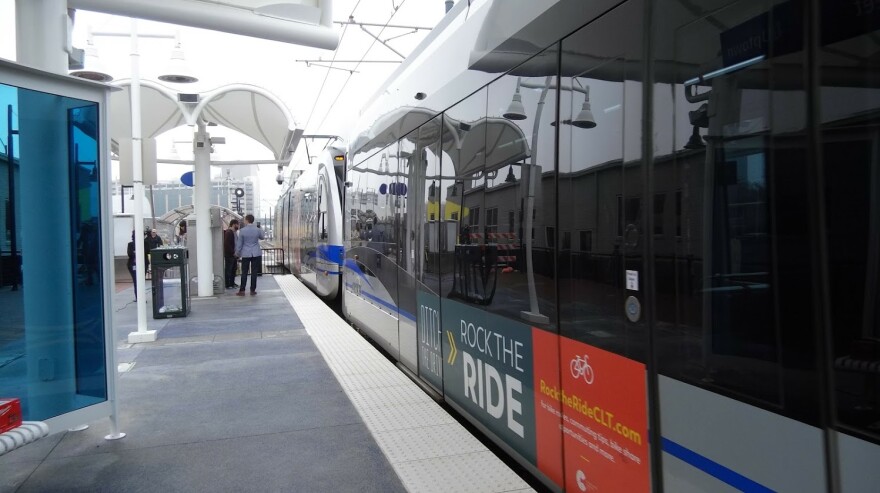The head of Charlotte Area Transit System says property owners and other private partners will be needed to help pay for the estimated $6-8 billion in transit projects he wants to complete by 2030.
CATS chief executive John Lewis said the Lynx Blue Line light rail was built with 50 percent federal money and 25 percent each from state and local sources. But state and federal policy changes are clouding the funding picture, he says.
For one thing, it's still not clear how rail fits into President Trump's plans to rebuild infrastructure nationwide.
"We're still trying to figure out what federal participation will be," Lewis said on WFAE's "Charlotte Talks" show Monday morning.
"And the state has made it clear that their participation will be no higher than 10 percent on these projects moving forward," Lewis added. "So we've got to look at different ways of funding and delivering. And I think the private sector will have to play a role in that moving forward."
That could come from partnerships with private developers and by capturing a portion of the growth in property tax revenues expected as properties along the rail lines gain value. Local officials could decide to set aside some or all of those new revenues for transit projects, in what's called tax increment financing.
The Lynx Blue line extension from uptown to UNC Charlotte opened in March. Now CATS is proposing rail lines southeast to Matthews, north to the Lake Norman area and west to the airport and Gaston County.
Last week, CATS unveiled new options for the west and north corridors, as well as a possible light rail tunnel under uptown.
CATS is seeking public comment on its latest round of route proposals. More information is at RideTransit.org.
Listen to the full interview with CATS CEO John Lewis at WFAE.org




